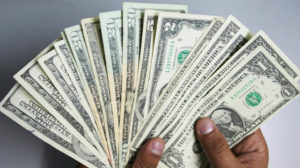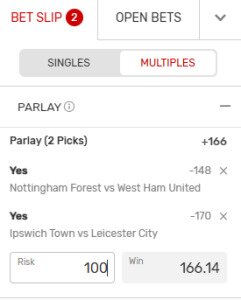 Author:
Webster Lupton
| Last Updated:
August 2025
Author:
Webster Lupton
| Last Updated:
August 2025
If you’ve done any kind of sports betting, you’ve probably heard the term vigorish thrown around. But, what is vigorish?
In short, vigorish is the fee we sports wagerers pay for each bet. But it goes further.
How does vigorish work? How do books derive at it? And how can bettors analyze vig to make the best of their betting experience?
This page will answer those questions through tips and analysis. You'll learn the true vigorish meaning, how to calculate vigorish on the most common wagers, and how to use that info to your favor.
The official vigorish definition from the Oxford English Dictionary is “the percentage deducted from a gambler’s winnings by the organizers of a game.”
Simply put, vigorish, vig, or juice, is the fee bettors pay when placing a wager at a sportsbook.
The amount of vig a customer pays varies with almost every bet. Vig in sports betting once went by a standard 10% fee. But, the use of computers and more complex betting options has allowed sportsbooks to set each wager with a built-in vig that is smaller but different in almost every bet in every sport.
How to Calculate Vig from a Sports BetMuch of gambling is a matter of analyzing numbers, and figuring the vigorish on a typical moneyline sports bet involves basic math. Here’s how to calculate vig from a sports bet:
1. You must first calculate the implied probability percentage of the outcome for both sides. The formula for positive moneyline odds is 100 divided by (odds value +100). For negative odds, absolute odds value/ (absolute odds value +100) gives you the implied probability.
2. Add the implied probabilities from each side.
3. Subtract 100 for the vig or juice.
For point spreads, the moneylines are generally -110 for both sides, accounting for the customary 10% bookmakers have charged for years.
Vig on Common LinesYou can add the implied probabilities of any two of the following common moneylines to get the juice on a matchup. For instance, -150 (60) and +125 (44.44) gives the book 4.4% juice.
| Odds | Implied Probability | Profits on a $100 Wager |
|---|---|---|
| +200 | 33.33% | $200 |
| +150 | 40% | $150 |
| +125 | 44.44% | $125 |
| +100 | 50% | $100 |
| -110 | 52.38% | $90.91 |
| -115 | 53.48% | $86.98 |
| -125 | 55.55% | $80 |
| -150 | 60% | $66.67 |
| -200 | 66.67% | $50 |
The probabilities also indicate the percentage of those bets you would have to win to break even. For instance, if you consistently wagered -110 for the standard 10% juice, you would have to win 52.38% of your total wagers to break even. You can also assess an expected value from an individual bet by comparing the implied probability to a true probability.
The vigorish matters because it varies between sportsbooks and individual bets. You should shop around to find a book with the best deal for the side you like. Remember that sportsbooks create lines that attract an equal amount of betting on both sides, and the vigorish allows them to profit regardless of who wins.
Not all sportsbooks have the same vig percentage, which is why line shopping is a popular tactic for bettors seeking the best value. If you’re looking to score the lowest vig, you need to start analyzing the vig on the same wager across multiple bookies.
As an example, we’ve picked one wager that all our recommended sportsbooks had at the time of writing and broke down the vig for each.
For this table, we looked at the moneyline wager on the August 8th game between the Miami Marlins and the Atlanta Braves, where Miami is the favorite.
| Sportsbook | Odds on Wager | Implied Probability | Vigorish | Potential Profit ($100 wager) |
|---|---|---|---|---|
| BetUS | -127 / +116 | 55.94% / 46.29% | 2.23% | $78.74 / $116 |
| BetOnline | -124 / +115 | 55.35% / 46.51% | 1.186% | $80.65 / $115 |
| MyBookie | -115 / +107 | 53.48% / 48.30% | 1.78% | $86.96 / $107 |
In this scenario, while BetOnline has the lowest vig percentage, MyBookie has the best odds on the Marlins. You will win more on the Marlins moneyline overall, making it the best wager.
Tactics for Reducing the Power of the Sportsbook's VigAuspicious sports bettors have a few tricks up their sleeves to help combat the power of vig. Here’s how to get an upper hand:

Consider taking wagers when the underdog moneyline is closer to the favorite, like -120 and +110. When you see lines like +125 vs. -145, the house is getting more vig. A good rule of thumb is to avoid more than a 40-money-point difference, such as -130 vs. +110.

Watch for no-juice and odds-boost promotions. If a sportsbook offers +100 for both sides of a bet, you have an even chance rather than a chance of “losing the juice.” Odds boosts can be significant enough to consider as well.

Sportsbooks heavily promote parlays because their calculated vigorish favors the house much more. Besides, it’s hard enough to pick one outcome, much less three or more. You can calculate the parlay vig the same way as we demonstrated by adding the implied probabilities of each leg.
What vig percentage should I avoid?

Answer
Webster Lupton , Author at GamblingNerd.com,
Anything over 10% is highway robbery. This is where line shopping comes into play. If you’re weighing options across sportsbooks, you’ll be able to find wagers with low vig percentages and better odds. Anything less than 5% is ideal, the lower the better.
Is a vig just interest?

Answer
Webster Lupton , Author at GamblingNerd.com,
In the sports betting world, vig isn’t like interest; it’s more like a fee. Sportsbooks use vig to make money on every wager, no matter the outcome. The term vig can also mean interest on a loan from a private moneylender. This meaning is slang and has nothing to do with sports betting.
Do you pay vig when you win?

Answer
Webster Lupton , Author at GamblingNerd.com,
Yes and no. Vig is applied to every wager, ensuring the sportsbook makes profit on favorites and underdogs. The vigorish is built into the wager, so you don’t have to pay anything when you win, it’s paid when you place your wager.
So, what is vig in betting? It is how sportsbooks make a profit, and there’s no way around it. But you can narrow the sportsbook’s edge by keeping an eye on vigorish rates and looking for bargains on the sides you like. Use the formulas and tips we’ve set out and get more bang for your buck.
Consider signing up at multiple sportsbooks so you can shop around for the best odds.

Webster Lupton is a veteran journalist, editor, author, and gambler. His book, A Place to Play, is a deep-dive on baseball history in North Carolina. Web enjoys camping, birdwatching, and fishing. From North Carolina, he likes betting on college basketball as well as NFL and college football. He’s a lifelong NY Giants fan.

